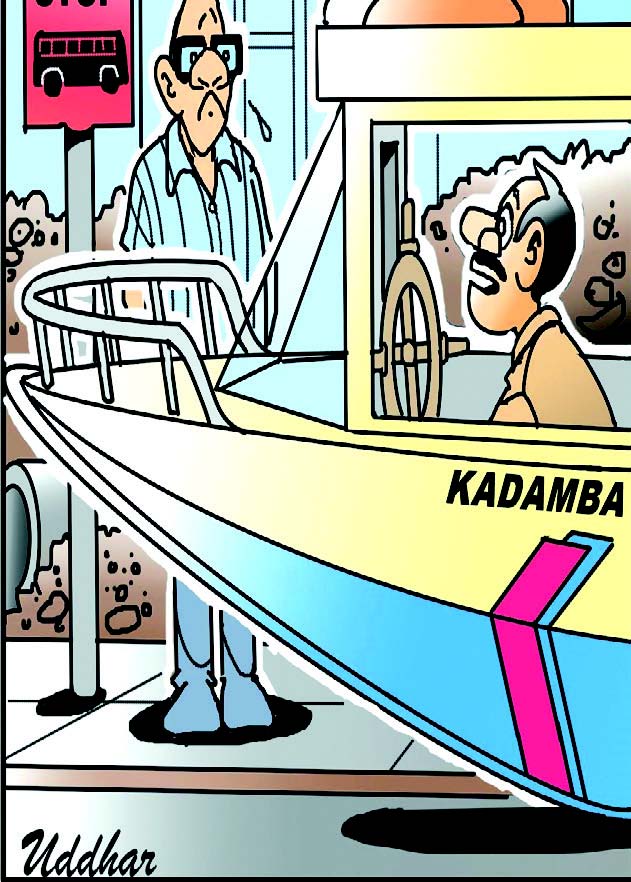21 Oct 2017 | 05:22am IST
Goa needs to upgrade tech in mining sector: Melwani
Mining in Goa has seen a roller-coaster ride in the past five years. The swings both ways, profit or loss has been significant. VIKANT SAHAY met with a mine owner and CEO of H L Nathurmal, Haresh L Melwani to find out the reasons and solutions for this anomaly
HERALD: Briefly explain the present mining scenario in Goa?
HARESH MELWANI: Mining in Goa a very small part of the whole picture. Various legal issues have come up apart from the practical issues regarding the business. In Goa, the business is basically dependent of export of iron ore and that too to China. Currently, due to the starting up of various mines in different countries after India exited the export market, the prices have really come down due to an oversupply situation, which is going to last for another eight to ten years.
HERALD: So how will Goa sustain itself?
HM: Goa has to sustain itself by adopting new technology. As we are aware Goa’s production has been capped at 20 million tonnes and If one is extracting 20 million tonnes of iron ore, it means that Goa is getting 80 million tonnes of other minerals on an average extraction ratio of 1:4. Goan mines will now have to adopt processing technology to segregate these minerals from the iron ore and upgrade them which will be suitable to be used in our local industries. The main problem is that we have not identified the other minerals and we do not have segregation technology for the minerals. Plus there should be proper marketing tools for these minerals. India is a large enough market to sell these minerals.
HERALD: Why have we not identified these minerals? Who needs to do this job?
HM: I cannot blame anyone for this. The basic issue is that easy money was coming so no one bothered. In fact it is everybody’s fault. Central government has taken away more than Rs 40,000 crore from Goa by imposing export duty on iron ore and they have not invested even one paisa in Goa from that money for setting up any research units. State government benefitted to the extent of 8-9000 crore in those four-five years when there was a boom. No one bothered to spend money on research and all thought that the party will continue. Our cost of production of iron-ore is high because we are throwing away four tonnes of other minerals as compared to one tonne of iron ore. In fact, if we do research and optimise our mines and minerals, upgrade our FE content in iron ore through upgraded technology, companies like Tata Steel and JSW have already promised us that they will purchase the entire 20 million tonnes, here in India alone. The problem lies in the mindset as there is no more easy money in mining. There are no dump or segregation policies which are also hitting the profit margin.
HERALD: Section 21 on definition of illegal mining has come into play after the Odisha High Court judgment. Can you elaborate on this?
HM: Section 21 is a very peculiar situation that interpretation of illegal mining as defined by Supreme Court has come into play by Odisha High Court judgment and Central government has also written to each and every state government to look at the definition of illegal mining. Consequently they have asked for a report on what will be the impact on the industry and the states. Overall, we have a rough estimate which includes coal and other minerals and according to that, if the definition is followed in principal, the penalties to the states may be to the tune of Rs 5 lakh crore on an all India basis. The impact on Goa is still to be analysed as it was announced very recently in the first week of August this year. However, I feel in Goa it could be to the extent of 20-30,000 crore.
HERALD: What are the issues with the transporters of ore, specially truckers?
HM: Mine owners are finding it difficult to meet the demands made by the truckers. Also, the miners are extracting less kind of minerals which leads to the high costing. There is a very simple solution that if you sell all the minerals which you extract, that is, instead of 20 million tonnes one would be selling 100 million tonnes and the cost will go down and the same truckers, miners and Goa will always be in a win-win situation. All will get more money, including truckers and government will surely get more revenue. I cannot understand why the government is interfering in the negotiation between the truck owners and the mine owners. All study, carrying capacity on the roads have been done and all truckers are fitted with RFID for easy monitoring, so where is the question of environment destruction? It is a total breakdown of the bureaucracy. Court has already given orders on the carrying capacity and government has submitted its report. Why can’t the government follow its own report? Why didn’t the Pollution Control Board and other bureaucrats clamp down on the excess transportation if there was any? Now that the Sonchi problem has happened, mining sector will suffer. Bureaucrats need to take proper steps.
